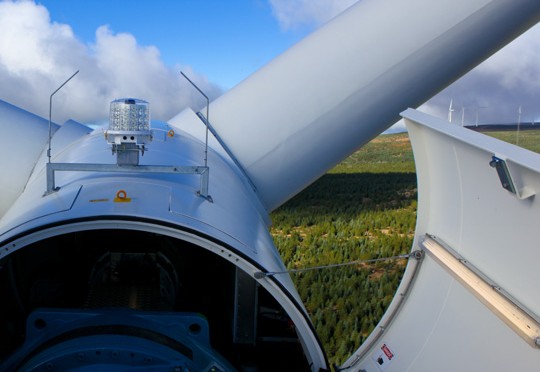Pattern Energy Group (TSX:PEG) (“Pattern Energy”), today announced it has agreed to acquire two wind power projects from its majority shareholder, Pattern Energy Group LP (“Pattern Development”), for total cash consideration of US$202.4 million.
Acquisition Highlights
- Adds 214 MW (an increase of 21%) in net capacity when completed, increasing Pattern Energy’s portfolio to 1,255 MW
- Initial acquisitions in a series of anticipated transactions with Pattern Development that are consistent with Pattern Energy’s growth plan to achieve its targeted 8-10% average annual increase in cash available for distribution (“CAFD”) per share
- Acquisitions funded from available cash and credit facilities
“These acquisitions that have been acquired at attractive prices will add 21% to our assets under management and will grow our expected cash available for distribution in 2014 and beyond,” said Mike Garland, President and CEO of Pattern Energy. “Additionally, they demonstrate our commitment to grow our assets and our cash available for distribution consistent with our stated investment objectives. They are both fully-financed, in-construction projects that use quality equipment, with long-term power sale contracts in place with creditworthy buyers. They are designed to provide accretive, stable and sustainable cash flows and are the first in what we believe will be a series of acquisitions from the portfolio owned by Pattern Development that support the growth plan we previously outlined during the IPO process.”
Grand Renewable
Grand Renewable is a 149 MW project located in Haldimand County, Ontario, that is being built with 67 Siemens 2.3 MW wind turbines. Construction of the project began in September 2013 concurrently with the closing of a non-recourse construction and term loan from a syndicate of leading project financing banks. The project is scheduled to reach construction completion and commercial operation in the fourth quarter of 2014. The electricity from Grand Renewable is committed to the Ontario Power Authority (the “OPA”), which has an AA-/Aa2 credit rating, under a 20-year power purchase agreement (“PPA”) that includes a predefined escalator. The Grand Renewable project has characteristics similar to Pattern Energy’s South Kent project but with a slightly higher PPA price and a slightly lower net capacity factor.
Grand Renewable is owned 45% by Pattern Energy, 45% by Samsung Renewable Energy, Inc. and 10% by the Six Nations of the Grand River. Pattern Energy will be the operator for the project under a long-term agreement with the project partnership. Pattern Energy paid the $79.5 million purchase price for its 45% interest from its unrestricted available cash.
Panhandle 2
Panhandle 2, a 182 MW wind project, is being built in Carson County, Texas, and consists of 79 Siemens 2.3 MW wind turbines. Construction of Panhandle 2 began concurrently with the execution of Pattern Energy’s acquisition agreement and the execution of non-recourse project construction financing with affiliates of Morgan Stanley. Upon commissioning, approximately 80% of the expected output is contracted under a long-term energy price hedge, with an A-/Baa2 credit-rated affiliate of Morgan Stanley, with the balance paid at ERCOT’s spot market prices. The Panhandle 2 project has strong, consistent wind with an expected net capacity factor that is slightly higher than 50%.
Pattern Energy, together with three institutional tax equity investors, will acquire Panhandle 2 upon completion of construction, which is scheduled to occur in the fourth quarter of 2014. Pattern Energy is expected to hold an approximate 80% ownership interest and receive the majority of cash flow throughout the project’s life. There will be no long term debt on the project. Pattern Energy will be the operator for the project under a long term agreement. Pattern Energy will pay the $122.9 million cash purchase price, subject to certain adjustments, to Pattern Development upon certain conditions being met, including confirmation that the tax equity investors are ready to fund their equity contributions and reaching commercial operations. The purchase price will be used to repay the project’s construction loan financing.

